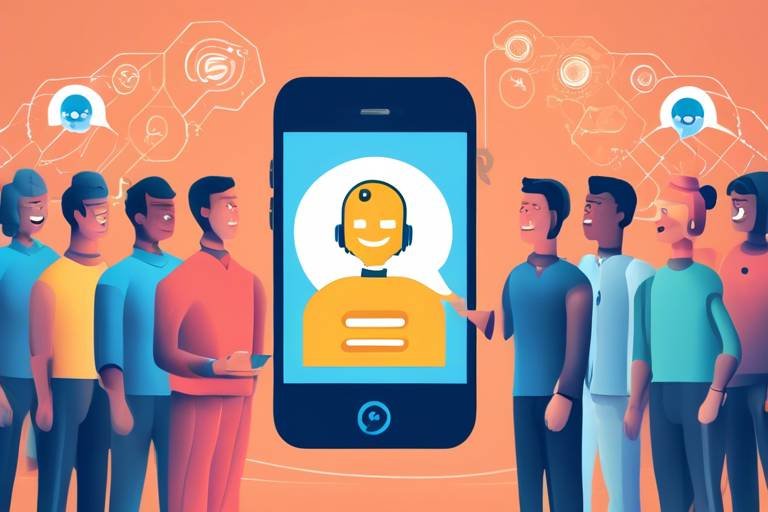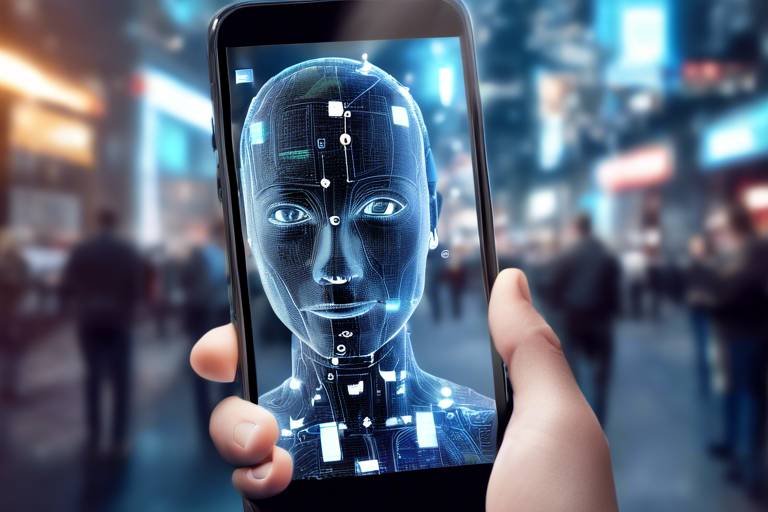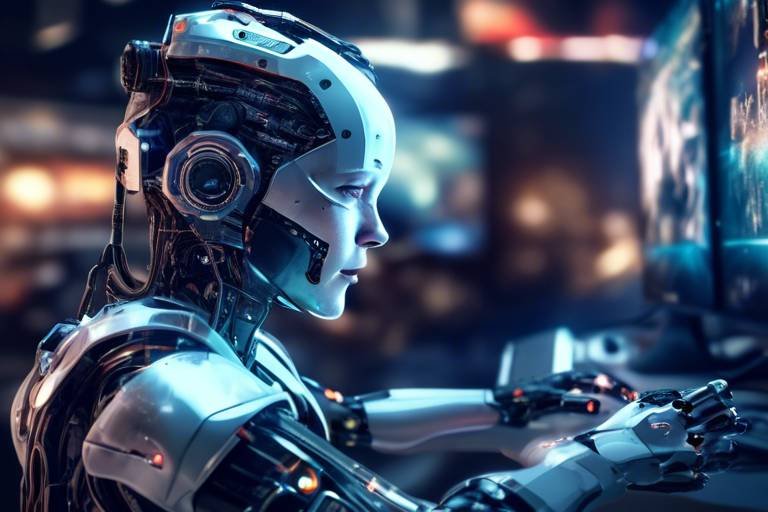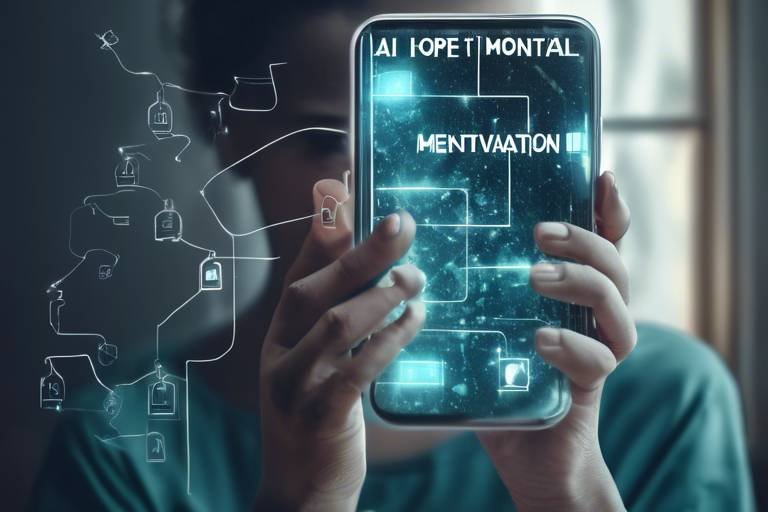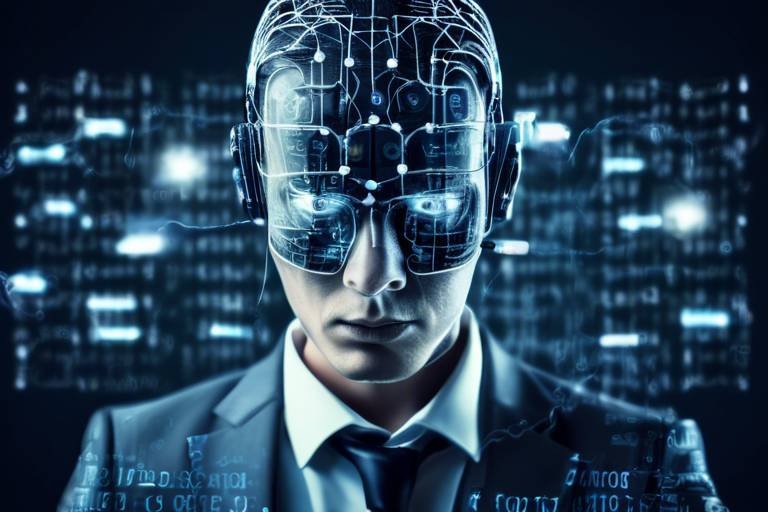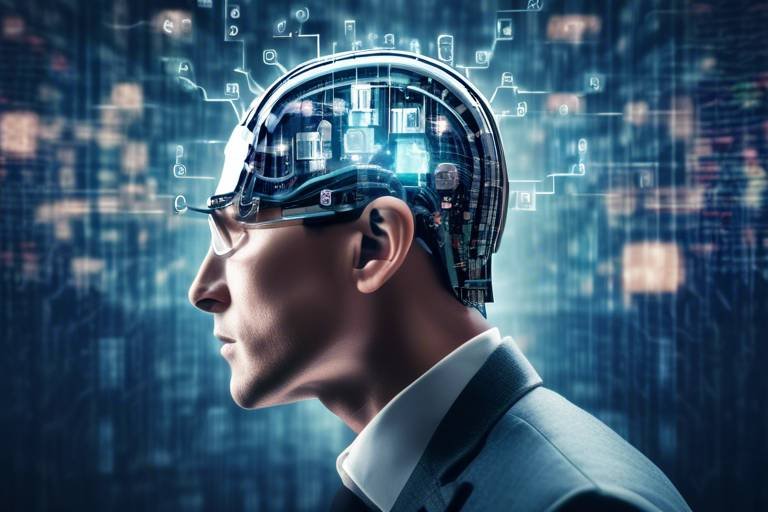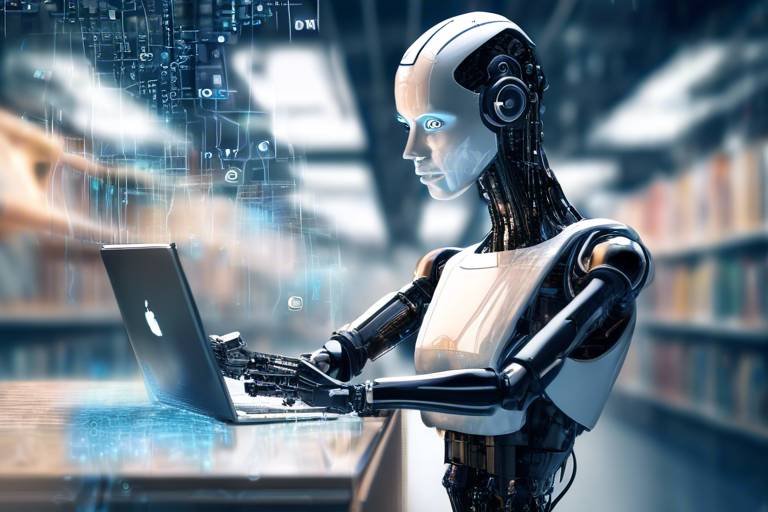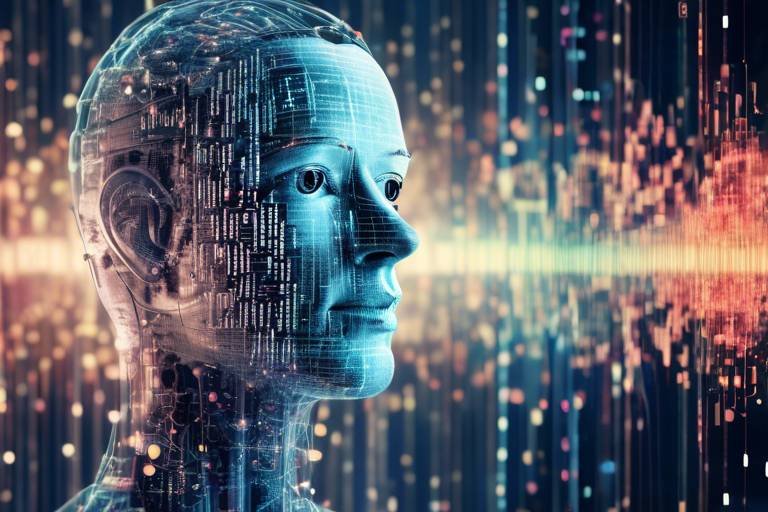Chatbots and AI: Changing the Face of Customer Service
In today's fast-paced digital world, customer service is undergoing a remarkable transformation, driven by the innovative forces of chatbots and artificial intelligence (AI). These technologies are not just trends; they are reshaping how businesses interact with their customers, making service more efficient and personalized. Imagine walking into a store and having a knowledgeable assistant ready to help you at any moment—this is what AI-powered chatbots offer, but on a much larger scale. They are available 24/7, ready to answer queries, resolve issues, and provide information at a moment’s notice. This article dives into how these technologies are revolutionizing customer service, their benefits, challenges, and the exciting future that awaits.
The journey of chatbots has been nothing short of extraordinary. From their humble beginnings as simple scripts that could respond to basic queries, they have evolved into sophisticated AI systems capable of understanding natural language and engaging in meaningful conversations. The advent of machine learning and natural language processing (NLP) has fueled this evolution, enabling chatbots to learn from interactions and improve over time. Today, businesses across various industries, from retail to healthcare, are harnessing the power of chatbots to enhance their customer service strategies. The widespread adoption of messaging apps has also paved the way for chatbots to thrive, as customers increasingly prefer to communicate through these platforms rather than traditional channels like phone calls or emails.
The integration of AI in customer service brings a plethora of advantages that can significantly enhance the overall customer experience. One of the most notable benefits is the improved response time. With AI, businesses can provide instant answers to customer queries, eliminating the frustration of long wait times. Imagine being able to receive assistance at any hour of the day without having to wait for a human representative to become available. This level of accessibility not only boosts customer satisfaction but also fosters loyalty.
AI-driven tools are designed to provide personalized interactions that cater to individual customer needs. By analyzing past interactions and customer data, chatbots can suggest relevant products, answer specific questions, and even anticipate customer needs before they arise. This level of personalization creates a tailored experience that enhances customer satisfaction. It’s like having a personal shopper who knows your preferences and is always ready to assist you.
One of the most significant advantages of AI is its ability to provide immediate assistance. Chatbots can resolve queries in real-time, drastically reducing wait times. Instead of being placed on hold or waiting for an email response, customers can engage with a chatbot and get their questions answered instantly. This not only improves the customer experience but also allows businesses to handle a larger volume of inquiries without compromising service quality.
Implementing chatbots can lead to substantial cost savings for businesses. By automating routine inquiries and support tasks, companies can reduce the need for a large customer service team, allowing them to allocate resources more efficiently. This cost efficiency does not come at the expense of service quality; in fact, it often enhances it. Businesses can maintain high service standards while significantly cutting operational costs, making AI a win-win solution.
Despite the numerous benefits, integrating AI into customer service is not without its challenges. Businesses often encounter obstacles such as technical issues, data security concerns, and the need for ongoing maintenance and updates. Moreover, there’s the challenge of ensuring that the chatbot understands customer inquiries accurately. To overcome these hurdles, companies must invest in robust training and development for their AI systems, as well as prioritize data privacy to build trust with their customers.
The potential of AI in customer service is vast and still largely untapped. As technology continues to advance, we can expect to see even more innovative applications of AI that will further transform the customer service landscape. Future trends may include the integration of AI with other technologies like machine learning and big data, enhancing the capabilities of chatbots to provide even more personalized and effective support.
As AI evolves, its integration with other technologies will create a more seamless customer experience. For instance, combining AI with big data analytics can provide businesses with deeper insights into customer behavior, preferences, and trends. This information can then be used to enhance service delivery, ensuring that customers receive the most relevant and timely assistance possible.
With the rapid growth of AI in customer service, ethical considerations regarding data privacy and job displacement are becoming increasingly important. Companies must address these issues proactively to ensure that the development of AI technologies aligns with ethical standards and fosters trust among consumers. Maintaining transparency about data usage and ensuring that AI complements human roles rather than replaces them will be crucial in navigating these challenges.
- What are chatbots? Chatbots are AI-powered tools that can simulate conversations with users, providing automated responses to queries and assisting with various tasks.
- How do chatbots improve customer service? They enhance customer service by offering instant support, personalizing interactions, and reducing wait times, leading to higher customer satisfaction.
- What challenges do businesses face when implementing AI? Common challenges include technical issues, data security concerns, and ensuring the chatbot accurately understands customer inquiries.
- What is the future of AI in customer service? The future includes greater integration with technologies like machine learning and big data, leading to more personalized and efficient service.

The Rise of Chatbots
Chatbots have become a significant part of our digital landscape, evolving from simple scripted responses to sophisticated AI-driven assistants that can engage in meaningful conversations. The journey of chatbots began in the 1960s with ELIZA, a program that could mimic human conversation to some extent. Fast forward to today, and we find ourselves amidst a technological revolution where artificial intelligence has taken center stage. What was once a novelty has now become a necessity for businesses aiming to enhance customer service.
As we delve into the evolution of chatbots, it’s essential to recognize the role of advancements in AI technology. These innovations have paved the way for chatbots to understand natural language, learn from interactions, and provide personalized responses. This shift has made them increasingly prevalent across various industries, from retail to healthcare, where they assist in everything from answering FAQs to scheduling appointments.
One of the key factors behind the rise of chatbots is their ability to operate 24/7. Imagine a world where customer inquiries are addressed at any hour, without the constraints of human limitations. This is not just a dream; it’s a reality that many businesses are embracing. By integrating chatbots into their customer service strategies, companies can ensure that help is always available, leading to improved customer satisfaction.
Additionally, the integration of chatbots with messaging platforms like Facebook Messenger, WhatsApp, and Slack has further fueled their adoption. Customers are more inclined to engage with brands through channels they are already familiar with. This seamless integration allows businesses to meet customers where they are, thereby enhancing the overall user experience.
However, the rise of chatbots is not without its challenges. Businesses must navigate issues such as ensuring the accuracy of responses and maintaining a human touch in interactions. Despite these hurdles, the potential benefits far outweigh the challenges, making chatbots an invaluable asset in the modern customer service toolkit.
In summary, the rise of chatbots has transformed the way businesses interact with their customers. As technology continues to advance, we can expect chatbots to become even more intelligent and capable, further solidifying their place in the customer service landscape.

Benefits of AI in Customer Service
Artificial Intelligence (AI) is not just a buzzword; it’s a game-changer in the realm of customer service. Imagine a world where your queries are resolved in seconds, where assistance is available at any hour, and where interactions feel personal. This is the reality that AI brings to customer service, transforming the way businesses interact with their clients. The integration of AI technologies into customer service strategies has opened a floodgate of opportunities, enhancing operational efficiency and elevating customer satisfaction to unprecedented levels.
One of the standout benefits of AI in customer service is the improved response times. Traditional customer service often involves long wait times, which can frustrate customers and lead to a negative experience. However, with AI chatbots, responses are generated almost instantaneously. Customers no longer have to wait in line or navigate through a maze of automated systems. Instead, they receive real-time assistance, ensuring their needs are met swiftly. This not only increases customer satisfaction but also enhances the overall efficiency of the service process.
Furthermore, AI technologies offer 24/7 availability. Unlike human agents, who require breaks and time off, chatbots are always on duty. This means that no matter when a customer reaches out—be it during the day or in the dead of night—help is just a click away. This round-the-clock service is particularly beneficial for businesses that operate in multiple time zones or have a global customer base. It ensures that all customers feel valued and supported, regardless of when they choose to engage with the brand.
Another remarkable advantage of AI in customer service is the ability to provide personalized interactions. By analyzing customer data and previous interactions, AI can tailor responses to fit individual needs and preferences. For instance, if a customer frequently asks about a specific product, the chatbot can prioritize that information in future interactions, creating a more personalized experience. This level of customization not only makes customers feel understood but also fosters loyalty, as they are more likely to return to a brand that recognizes their unique needs.
To illustrate the impact of AI in customer service, consider the following table that outlines key benefits:
| Benefit | Description |
|---|---|
| Improved Response Times | Instantaneous replies to customer inquiries, reducing wait times significantly. |
| 24/7 Availability | Continuous support regardless of time, ensuring customers can always reach out. |
| Personalized Interactions | Customized responses based on customer data, enhancing the customer experience. |
| Cost Efficiency | Reduction in operational costs while maintaining high service standards. |
Additionally, implementing AI can lead to cost efficiency for businesses. With chatbots handling a significant volume of routine inquiries, human agents can focus on more complex issues that require a personal touch. This not only optimizes workforce allocation but also reduces the overall operational costs associated with customer service. In fact, many companies report that they save thousands of dollars annually by integrating AI solutions into their customer service frameworks.
In conclusion, the benefits of AI in customer service are profound and far-reaching. From enhancing customer experience through instant support and personalized interactions to achieving cost efficiency, AI is revolutionizing the way businesses engage with their customers. As technology continues to evolve, we can only expect these advantages to grow, paving the way for a future where customer service is more efficient, effective, and enjoyable for everyone involved.
- What are chatbots? Chatbots are AI-driven tools that simulate human conversation to assist customers in real-time.
- How do AI chatbots improve customer service? They provide instant responses, operate 24/7, and personalize interactions based on customer data.
- Are there any challenges in implementing AI in customer service? Yes, challenges include integration issues, data privacy concerns, and the need for ongoing training.
- Will AI replace human customer service agents? While AI can handle routine inquiries, human agents are still essential for complex issues and emotional support.

Enhanced Customer Experience
In the fast-paced world of customer service, personalization has become the golden ticket to customer satisfaction. Imagine walking into a store where the staff knows your name, remembers your last purchase, and can recommend products tailored just for you. This is the kind of experience that AI-driven tools, particularly chatbots, are striving to replicate in the digital realm. By analyzing customer data and interactions, chatbots can create a unique experience for each user, ensuring that their preferences and past behaviors inform future interactions.
One of the most exciting aspects of chatbots is their ability to engage with customers on a personal level. They can remember previous conversations and even anticipate needs based on user behavior. For instance, if a customer frequently inquires about a specific product, the chatbot can proactively offer updates or promotions related to that item. This level of personalized interaction not only enhances the customer experience but also fosters a sense of loyalty and trust towards the brand.
Moreover, the integration of AI in customer service means that chatbots can provide a consistent experience across various platforms. Whether a customer reaches out via social media, a company website, or a mobile app, the chatbot can deliver the same quality of service. This omnichannel approach ensures that customers feel valued and understood, regardless of how they choose to engage with the brand.
To illustrate the impact of enhanced customer experience through AI, consider the following table that compares traditional customer service with AI-driven interactions:
| Aspect | Traditional Customer Service | AI-Driven Customer Service |
|---|---|---|
| Response Time | Varies, often slow | Instantaneous |
| Personalization | Limited, based on human memory | Highly personalized, data-driven |
| Availability | Business hours only | 24/7 availability |
| Cost | Higher operational costs | Reduced costs with efficiency |
As we can see, AI-driven customer service not only improves response times but also enhances personalization and availability, leading to a significantly better customer experience. This transformation is akin to upgrading from a flip phone to the latest smartphone – the difference is not just in the features but in the entire way we interact with technology.
However, it’s important to remember that while chatbots and AI can significantly enhance customer experience, they should complement, not replace, human interaction. There will always be situations that require the empathy and understanding that only a human can provide. Therefore, the ideal customer service strategy combines the efficiency of AI with the personal touch of human agents, creating a seamless and enriching experience for customers.

Instant Support
In today's fast-paced world, customers expect immediate responses to their inquiries, and this is where chatbots shine. Imagine walking into a store and having a knowledgeable assistant ready to help you at any moment. That's the essence of provided by AI-driven chatbots. These digital assistants are available 24/7, ensuring that no matter when a customer has a question, there's someone—or rather something—ready to assist them.
The ability of chatbots to provide real-time answers drastically reduces the time customers spend waiting for help. Traditional customer service often involves long hold times or delayed email responses, which can lead to frustration and dissatisfaction. In contrast, chatbots can handle multiple queries simultaneously, ensuring that every customer gets prompt attention. For instance, if a customer wants to know about the status of their order, they can receive an immediate update without having to navigate through complex phone menus or waiting for a human agent to become available.
Consider the following scenarios where instant support makes a significant difference:
- Order Inquiries: Customers can quickly check their order status or track their shipment without any hassle.
- Product Information: Chatbots can provide detailed product specifications and availability in real-time, helping customers make informed decisions.
- Technical Support: For technical issues, chatbots can guide users through troubleshooting steps instantly, resolving problems before they escalate.
Additionally, chatbots can analyze user input to understand the context of inquiries better, allowing them to provide more relevant and personalized responses. This capability means that customers don’t just get answers; they receive answers that are tailored to their specific situations. The integration of natural language processing (NLP) technology enhances this experience, making interactions feel more human-like and less robotic.
The benefits of instant support extend beyond just customer satisfaction. Businesses that implement chatbots for immediate assistance often see a boost in operational efficiency. By automating routine inquiries, human agents can focus on more complex issues that require a personal touch. This not only improves the overall service quality but also optimizes resource allocation within the company.
In conclusion, the provided by chatbots is a game-changer in the realm of customer service. As businesses continue to embrace this technology, they enhance not only their operational efficiency but also the overall customer experience. With the ability to deliver prompt, accurate, and personalized responses, chatbots are setting a new standard for what customers expect from service interactions.
- What are chatbots?
Chatbots are AI-driven tools designed to simulate conversation with users, providing instant responses to inquiries. - How do chatbots provide instant support?
They are available 24/7 and can handle multiple queries at once, allowing for immediate assistance without wait times. - Can chatbots understand complex inquiries?
Yes, with advancements in natural language processing, chatbots can analyze and respond to complex questions more effectively. - Are chatbots cost-effective?
Implementing chatbots can reduce operational costs by automating routine tasks and freeing up human agents for more complex issues.

Cost Efficiency
Implementing chatbots in customer service can lead to significant cost savings for businesses. Imagine a scenario where a company spends a considerable amount on a large customer service team, with salaries, training, and benefits piling up month after month. Now, picture replacing a significant portion of that team with smart, efficient chatbots that can handle inquiries around the clock. This shift not only reduces the workforce needed for support but also enhances overall productivity. By utilizing AI-driven chatbots, businesses can streamline their operations, allowing human agents to focus on more complex tasks that require a personal touch.
One of the most striking aspects of chatbots is their ability to operate 24/7. Traditional customer service teams have limitations; they need breaks, vacations, and time off. However, chatbots are always ready to assist, providing instant responses to customer inquiries at any hour of the day. This constant availability can lead to increased customer satisfaction, as clients no longer have to wait for business hours to get their questions answered. Furthermore, the reduction in wait times can lead to higher conversion rates, as potential customers are less likely to abandon their inquiries due to frustration.
To illustrate the financial impact of chatbots, consider the following table that compares traditional customer service costs with those of AI-driven solutions:
| Cost Element | Traditional Customer Service | AI-Driven Chatbot Service |
|---|---|---|
| Annual Salaries | $200,000 (for a small team) | $20,000 (for chatbot maintenance) |
| Training Costs | $10,000 | $1,000 |
| Operational Hours | 8 hours/day | 24/7 |
| Response Time | 5-10 minutes | Instant |
| Customer Satisfaction Rate | 70% | 90% |
As the table demonstrates, the financial benefits of integrating chatbots into customer service are clear. The annual savings from salaries and training alone can be substantial, allowing businesses to reinvest those funds into other areas of growth. Moreover, the ability to provide instant responses not only enhances customer satisfaction but also fosters brand loyalty, as customers appreciate the efficiency and reliability of the service they receive.
In conclusion, the cost efficiency of chatbots is not merely about reducing expenses; it's also about optimizing service quality and enhancing customer experiences. By embracing AI technologies, businesses can position themselves for long-term success while maintaining high service standards. The future is bright, and those who adapt to these changes will undoubtedly reap the rewards.
- How much can a business save by implementing chatbots?
Cost savings can vary widely, but many businesses report reductions in customer service costs by up to 30-50% after implementing chatbots.
- Are chatbots capable of handling complex customer inquiries?
While chatbots excel at handling routine questions and tasks, they can also be programmed to assist with more complex inquiries by escalating them to human agents when necessary.
- What industries can benefit from chatbots?
Chatbots can be effectively utilized in various industries, including retail, healthcare, finance, and telecommunications, providing tailored solutions to meet specific customer needs.

Challenges of Implementing AI
This article explores how chatbots and artificial intelligence are revolutionizing customer service. We'll examine their benefits, challenges, and future potential in enhancing customer experiences and operational efficiency.
Chatbots have become increasingly prevalent in customer service. This section discusses their evolution, highlighting how advancements in AI technology have led to their widespread adoption across various industries.
AI offers numerous advantages for customer service, including improved response times and 24/7 availability. This section outlines key benefits that AI technologies bring to businesses and their customers.
AI-driven tools provide personalized interactions, leading to higher customer satisfaction. Here, we delve into how chatbots create tailored experiences that meet individual customer needs.
One of the most significant advantages of AI is its ability to provide immediate assistance. This subsection explores how chatbots can resolve queries in real-time, reducing wait times.
Implementing chatbots can lead to substantial cost savings for businesses. This section discusses how AI reduces operational costs while maintaining high service standards.
Despite the myriad advantages that AI and chatbots bring to customer service, the journey to implementation is not without its hurdles. One of the primary challenges businesses face is the integration of AI technology into existing systems. Many organizations have legacy systems that are not designed to work with modern AI solutions, leading to potential compatibility issues. This can create a frustrating experience not just for the customer, but also for the employees who must navigate these hurdles.
Another significant challenge is the training and development of AI systems. Chatbots rely heavily on data to learn and improve their responses. If the data used for training is biased or incomplete, it can lead to misunderstandings and poor customer interactions. Moreover, it requires ongoing effort to keep the AI updated with current information and trends. Without regular updates, chatbots can quickly become outdated, which can diminish their effectiveness.
Additionally, there are concerns about data privacy. As chatbots collect and analyze customer data to provide personalized experiences, customers may feel uneasy about how their information is being used. Businesses must navigate the fine line between utilizing data for better service and ensuring that they respect customer privacy. This requires transparent communication and robust security measures to protect sensitive information.
Lastly, there is the fear of job displacement. Many employees worry that AI will replace their roles, leading to resistance against adopting new technologies. This can create a toxic environment where employees feel threatened, rather than empowered to work alongside AI. To mitigate this, companies should focus on upskilling their workforce and emphasizing how AI can complement human efforts, rather than replace them.
The potential of AI in customer service is vast. This section speculates on future trends and innovations that could further transform the customer service landscape.
AI is increasingly being integrated with other technologies like machine learning and big data. This subsection explores how these integrations enhance customer service capabilities.
As AI continues to evolve, ethical concerns arise regarding data privacy and job displacement. This section discusses the importance of addressing these issues in the development of AI technologies.
- What are chatbots?
Chatbots are AI-driven programs designed to simulate human conversation and assist users in real-time. - How do chatbots improve customer service?
They provide instant responses, personalized interactions, and are available 24/7, enhancing the overall customer experience. - What challenges do businesses face when implementing AI?
Challenges include integration with existing systems, data privacy concerns, and the potential for job displacement. - Will AI replace human customer service representatives?
While AI can handle many tasks, it is designed to complement human efforts, not fully replace them.

The Future of AI in Customer Service
The potential of artificial intelligence (AI) in customer service is not just a fleeting trend; it’s a revolution that’s set to redefine how businesses interact with their customers. Imagine walking into a store where the staff already knows your name, your preferences, and can anticipate your needs before you even ask. That’s the kind of personalized experience AI aims to deliver! As we look ahead, several exciting trends and innovations are on the horizon, promising to enhance customer service even further.
One of the most significant developments is the integration of AI with other cutting-edge technologies. For instance, when AI meets machine learning and big data analytics, the result is a powerhouse that can analyze customer behavior and preferences at an astonishing scale. This integration allows businesses to not only respond to customer inquiries but to also predict future needs based on historical data. Imagine a chatbot that can not only answer your questions but also suggest products or services you might not have considered, all tailored to your unique profile.
Furthermore, the future will likely see AI systems becoming more sophisticated in understanding natural language. This means that chatbots will not just respond to keywords but will grasp the context and sentiment behind customer inquiries. This evolution will lead to more meaningful and engaging interactions, making customers feel heard and understood. The more human-like these interactions become, the more likely customers are to engage positively with the brand.
However, with great power comes great responsibility. As AI continues to evolve, ethical considerations must take center stage. Issues such as data privacy and job displacement are crucial conversations that businesses need to address proactively. For instance, how will companies ensure that customer data is protected while still leveraging it for personalized service? And what about the employees whose roles may be affected by automation? It’s essential for businesses to strike a balance between technological advancement and ethical responsibility.
In summary, the future of AI in customer service is bright and full of potential. By integrating advanced technologies, enhancing natural language processing, and addressing ethical concerns, businesses can create a customer service landscape that is not only efficient but also deeply personalized. The key will be to embrace these changes while remaining committed to the values that matter most to customers.
- How will AI improve customer service in the future?
AI will enhance customer service by providing personalized interactions, predicting customer needs, and streamlining support processes. - What ethical concerns are associated with AI in customer service?
Key concerns include data privacy, job displacement, and ensuring that AI systems are used responsibly. - Can AI completely replace human customer service representatives?
While AI can handle many tasks, human representatives will still be essential for complex issues and providing empathy in interactions.

Integration with Other Technologies
As we delve into the realm of customer service, it becomes increasingly clear that the future is not just about standalone chatbots or AI systems; it's about the seamless integration of these technologies with other cutting-edge tools. Imagine a world where chatbots don't just respond to queries but also leverage machine learning and big data to enhance their capabilities. This integration can create a robust ecosystem that not only improves customer interactions but also drives business growth.
For instance, when chatbots are integrated with machine learning, they can analyze past interactions to predict future customer needs. This predictive capability allows them to offer personalized recommendations, making each customer feel uniquely valued. Picture a chatbot that remembers your previous purchases and suggests complementary products during your next visit. This level of personalization is not just a luxury; it's becoming an expectation.
Moreover, the integration of big data analytics can provide businesses with insights into customer behavior patterns. By analyzing vast amounts of data, companies can identify trends and adjust their strategies accordingly. This means that chatbots can not only respond to inquiries but also proactively engage customers based on their preferences and behaviors. For example, if data shows that a customer frequently asks about a specific product, the chatbot can initiate a conversation about promotions or updates related to that item.
However, the integration of these technologies comes with its own set of challenges. Businesses must ensure that their systems are compatible and that data privacy is maintained throughout the process. It's crucial to establish a solid framework that allows for the safe exchange of information between chatbots, machine learning algorithms, and big data systems. This is where the importance of a well-defined data governance policy comes into play, ensuring that customer data is handled ethically and responsibly.
In conclusion, the integration of chatbots with other technologies like machine learning and big data is paving the way for a more intelligent and responsive customer service landscape. As these tools evolve and become more interconnected, businesses will be better equipped to meet customer expectations and enhance overall satisfaction. The future is bright for AI in customer service, and those who embrace these integrations will undoubtedly lead the charge in creating exceptional customer experiences.
- What are chatbots? Chatbots are AI-powered tools designed to simulate conversation with users, providing instant responses to queries.
- How do chatbots improve customer service? By offering 24/7 availability, instant support, and personalized experiences, chatbots significantly enhance customer service interactions.
- What technologies can be integrated with chatbots? Chatbots can be integrated with machine learning, big data analytics, CRM systems, and more to improve their functionality and effectiveness.
- Are there any challenges in implementing AI in customer service? Yes, businesses may face challenges such as data privacy concerns, integration issues, and resistance to change from staff.
- What does the future hold for AI in customer service? The future is likely to see more advanced integrations, greater personalization, and a focus on ethical considerations in AI development.

Ethical Considerations
As we dive deeper into the realm of artificial intelligence and chatbots, it’s crucial to pause and reflect on the that accompany these advancements. While AI offers remarkable capabilities, it also raises significant questions about data privacy, job displacement, and transparency. These issues are not just technical hurdles; they are fundamental to how we shape the future of customer service.
First and foremost, data privacy is a pressing concern. Chatbots often collect vast amounts of personal information to provide tailored experiences. However, consumers are becoming increasingly aware of how their data is used. This leads us to ask: How much do we really know about what happens to our data once it’s in the hands of AI? Companies must prioritize transparent data practices, ensuring customers are informed about data collection and usage. This can include:
- Clear privacy policies
- Opt-in consent mechanisms
- Regular audits of data usage
Next, we must address the potential for job displacement. As chatbots and AI take on more customer service roles, there’s a legitimate fear that human jobs may be at risk. However, it’s essential to view this through a different lens. Rather than replacing jobs, AI can augment human capabilities, allowing employees to focus on more complex tasks that require emotional intelligence and critical thinking. The key lies in upskilling the workforce to work alongside AI, rather than being replaced by it.
Moreover, the issue of transparency in AI decision-making processes cannot be overlooked. Customers deserve to know how decisions are made, especially when it comes to their interactions with chatbots. If a chatbot denies a request or provides a specific solution, the reasoning behind that decision should be clear. This transparency builds trust and fosters a better relationship between customers and businesses. Companies can implement practices such as:
- Providing explanations for chatbot decisions
- Offering human fallback options when necessary
- Regularly updating customers on AI developments
Finally, as we look to the future, it’s vital to engage in ongoing discussions about the ethical implications of AI in customer service. Stakeholders, including businesses, technologists, and consumers, need to collaborate to create a framework that prioritizes ethical standards. This dialogue will help ensure that as we embrace the benefits of AI, we do so responsibly and with respect for individual rights.
Q: What are the main ethical concerns regarding AI in customer service?
A: The primary concerns include data privacy, job displacement, and the need for transparency in AI decision-making.
Q: How can businesses ensure data privacy while using chatbots?
A: Businesses can implement clear privacy policies, obtain opt-in consent, and conduct regular audits of their data practices.
Q: Will AI replace human jobs in customer service?
A: While AI may automate certain tasks, it can also augment human roles, allowing employees to focus on more complex and emotionally driven interactions.
Q: How can companies promote transparency in AI?
A: Companies can provide explanations for chatbot decisions, offer human fallback options, and keep customers informed about AI developments.
Frequently Asked Questions
- What are chatbots and how do they work?
Chatbots are automated programs designed to simulate conversation with users. They work by using artificial intelligence to understand and respond to customer inquiries in real-time, providing instant support and information.
- What are the benefits of using AI in customer service?
AI in customer service offers numerous advantages, including improved response times, 24/7 availability, and the ability to handle multiple inquiries simultaneously. This leads to enhanced customer satisfaction and operational efficiency.
- Can chatbots provide personalized customer experiences?
Yes! AI-driven chatbots can analyze customer data to create tailored interactions. By understanding individual preferences and behaviors, they can offer personalized recommendations and solutions, making customers feel valued.
- What challenges do businesses face when implementing AI?
Businesses often encounter challenges such as integration issues, data privacy concerns, and the need for employee training. Overcoming these obstacles requires careful planning and a clear strategy for implementation.
- How do chatbots reduce operational costs?
By automating routine inquiries and tasks, chatbots significantly reduce the need for human agents, which leads to lower labor costs. Additionally, they can handle a high volume of requests without additional expenses, making them a cost-effective solution.
- What is the future of AI in customer service?
The future looks bright for AI in customer service! We can expect advancements in natural language processing, deeper integration with machine learning technologies, and innovations that will further enhance customer interactions and satisfaction.
- Are there ethical concerns associated with AI and chatbots?
Absolutely! As AI technologies evolve, concerns regarding data privacy and job displacement arise. It’s crucial for companies to prioritize ethical practices to maintain customer trust and ensure responsible AI usage.
- How can businesses overcome the challenges of AI integration?
To overcome integration challenges, businesses should invest in training for their teams, ensure clear communication about AI capabilities, and adopt a phased approach to implementation, allowing for adjustments based on feedback.

